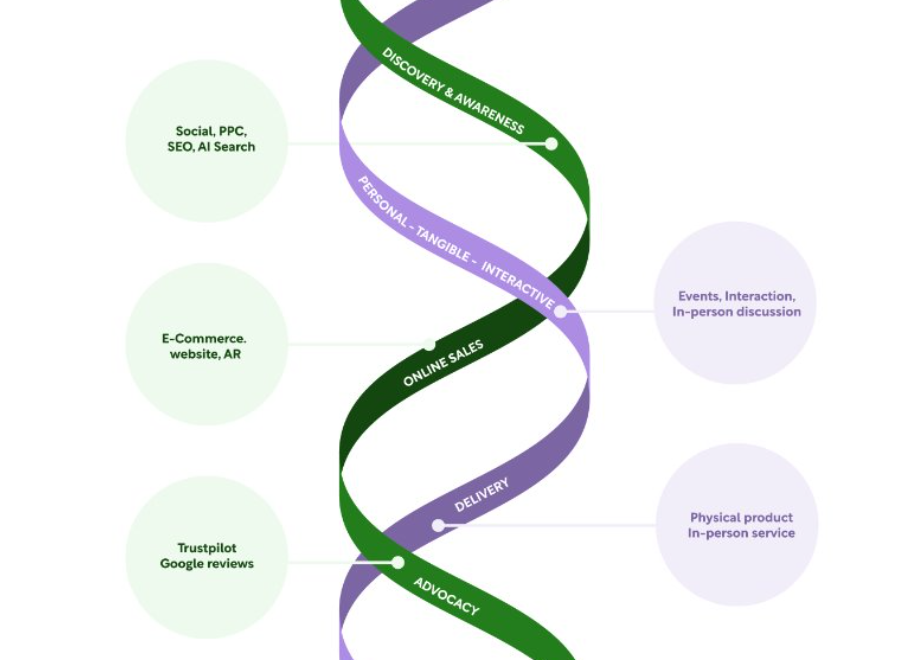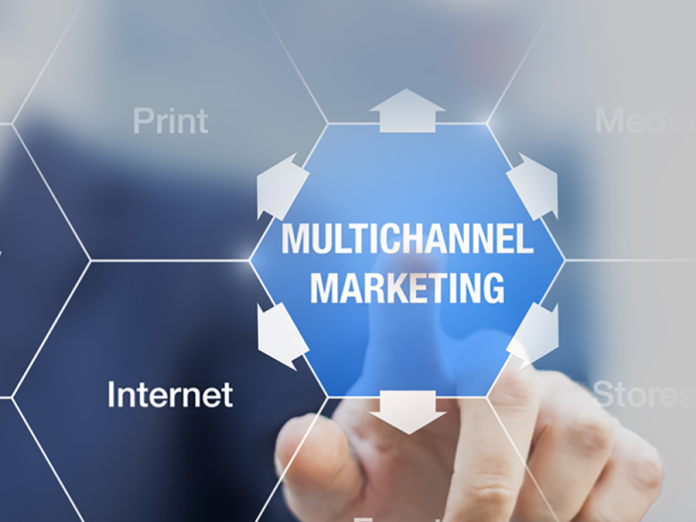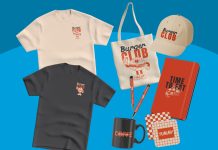Marketing has always been about visibility and influence, and print was the first mass medium to deliver both. Posters, leaflets and flyers have been in circulation for centuries, from early broadsides in the 16th century to the explosion of print advertising in the 19th and 20th centuries. Businesses relied on printed materials to inform, persuade and drive sales long before radio and television introduced broadcast marketing to the mix.
The arrival of digital marketing in the 21st century has reshaped the landscape again, offering new ways to reach and engage audiences. While digital channels have become a dominant force, businesses that focus solely on online marketing risk missing out on valuable opportunities. The most effective marketing strategies recognise the power of multiple touchpoints—blending digital with print to create a more persuasive, memorable and results-driven campaign.
In this blog, we’ll explore why a mixed media approach remains essential, looking at the strengths of both print and digital and how they work together to drive engagement, influence decision-making and improve conversion rates.
The enduring impact of print marketing
In an era dominated by digital communication, print marketing continues to hold significant value. Tangible materials such as catalogues and direct mail remain effective tools for engaging consumers beyond the digital sphere.
One notable advantage of print is its physical presence; a catalogue delivered to a customer’s doorstep demands attention. At a minimum, it’s briefly viewed before being recycled; at best, it captivates a digitally fatigued recipient, offering a tactile experience that digital media often lacks.
Recent statistics support the effectiveness of print marketing as part of a multichannel marketing mix:
- Combining print and digital ads makes online campaigns 400% more effective. (www.financesonline.com)
- Multichannel campaigns, including print, achieve a 20% higher ROI. (www.comosoft.us)
- Print ads drive a 27% increase in website visits. (www.gardnerweb.com/blog)
- 92% of direct mail recipients are driven to online or digital activity. (www.dma.org.uk)
- Brand Recall is 77% for print ads and 46% for digital ads. (www.financesonline.com)
- 67% of GenX recipients scan QR codes on Direct Mail. (www.selectabase.co.uk/)
These insights underscore the enduring power of print marketing in capturing attention, enhancing campaign effectiveness, and fostering customer loyalty.
Measuring your impact
One of digital marketing’s biggest advantages is its measurability. Every click, impression and conversion can be tracked, offering marketers a clear picture of how campaigns are performing. Tools such as Google Analytics, Meta Pixel and customer relationship management (CRM) systems make it easy to assess which channels are driving engagement and delivering the best return on investment.
But while digital campaigns provide immediate data, print marketing is far from untrackable. By integrating print with digital tools, businesses can gather meaningful insights about customer interactions and campaign performance.
Tracking print marketing with digital tools
One of the simplest ways to measure print marketing is by using QR codes and UTM tracking.
- QR codes (Quick Response codes) are scannable barcodes that direct users to a specific URL when scanned with a smartphone. By placing QR codes on printed materials, businesses can encourage customers to engage further—whether that’s visiting a landing page, watching a product video or redeeming a special offer.
- UTM tracking (Urchin Tracking Module) refers to a small piece of code added to a URL that helps identify where website traffic is coming from. By embedding UTM parameters into the URLs linked to a QR code, businesses can track exactly how many visitors came from a particular print campaign, which locations generated the most interest and which pieces of printed media performed best.
Other ways to measure print marketing success include:
- Unique promo codes – Assigning print-exclusive discount codes enables businesses to track how many sales originated from a particular flyer, catalogue or direct mail piece.
- Dedicated phone numbers – Using a specific phone number on a printed campaign allows businesses to monitor how many calls were generated by a given piece of marketing.
- Custom landing pages – Creating a unique landing page URL for each print campaign makes it easy to track how many visitors engaged with the offer.
Understanding the sales funnel in a multi-channel world
The traditional sales funnel helps marketers visualise the stages a customer moves through on their way to making a purchase. At the top of the funnel, broad marketing efforts create awareness, while the bottom of the funnel focuses on converting interested prospects into buyers.
While this model is useful, it’s a simplification—especially in a world where digital and print marketing work together. Customers don’t follow a linear path; instead, they move between online and offline interactions in a way that creates a more fluid, multi-touchpoint journey.
Consider this scenario:
- A poster raises awareness and sparks interest.
- The customer searches online for more information.
- They request a catalogue, engaging with printed content at home.
- After browsing, they make a purchase online.
- Their order arrives with branded packaging and a printed insert encouraging repeat business.
- They leave an online review, influencing future buyers.
Each step blends print and digital marketing, reinforcing the brand at different points in the journey. Recognising this interplay helps marketers design campaigns that guide customers seamlessly through the sales funnel, using the strengths of both print and digital to drive engagement and conversions.
Using print to drive digital engagement
While print is an effective standalone marketing tool, it’s also a powerful way to encourage digital interaction. QR codes, as discussed earlier, provide an easy bridge from printed materials to online content, but they’re not the only option.
Augmented Reality (AR) is another way to connect print and digital experiences. Unlike Virtual Reality (VR), which immerses users in a fully digital environment, AR enhances the real world by overlaying digital content onto physical objects.
For print marketing, this can create interactive experiences that add depth to traditional materials:
- Brochures can trigger 3D animations – A customer scanning a page might see a product demonstration in augmented reality.
- Business cards can play videos – A quick scan could introduce a business through a short welcome video.
- Exhibition displays can unlock immersive content – A large-format print could reveal interactive product showcases, 360° views, or exclusive event offers.
By incorporating AR and other digital tools, print marketing becomes more measurable, engaging and interactive—ensuring that physical marketing materials remain a key part of a multi-channel strategy.
Bringing an online audience into physical spaces
While digital marketing excels at engagement and conversion, there are many scenarios where the ultimate goal is to bring customers into a physical space. Whether it’s a showroom, an event, or a consultation, certain products and services benefit from in-person interaction.
For industries where tactility and personal experience are key, an online-to-offline journey is essential. Examples include:
- Showrooms and retail spaces – Furniture, kitchen units and high-end electronics often require in-person evaluation.
- Specialist products – Musical instruments, sports equipment and luxury fashion benefit from hands-on experience before purchase.
- Personal services – Personal trainers, therapists and beauty treatments rely on face-to-face interactions to build trust and deliver results.
- Events and networking – Whether it’s a business conference or an exclusive brand experience, digital promotion drives attendance at real-world events.
Once customers are in a physical environment, print plays a crucial role in reinforcing the brand and guiding their experience.
- Signage and displays provide clear navigation, highlight key products and reinforce branding.
- Brochures and catalogues offer tangible takeaways that extend engagement beyond the visit.
- Forms and Loyalty Cards encourage future interaction, whether it’s booking a follow-up appointment or joining a membership programme.
- Packaging and inserts – Branded Pouch Packaging, Postcards and Stickers add a personalised touch to products and enhance the unboxing experience.
By recognising the connection between online marketing and physical experiences, businesses can create seamless, engaging journeys that make the most of print’s lasting impact.
Print’s role throughout the customer journey
Print remains a powerful tool at every stage of the marketing funnel, working alongside digital to create a seamless brand experience. Whether you’re raising awareness, guiding customers through a purchase, or reinforcing loyalty after a sale, the right print materials make a measurable impact.
- Attract attention at the top of the funnel with bold, eye-catching Posters that draw interest in high-footfall areas.
- Enhance in-person interactions with professional Signage for showrooms, exhibitions and retail spaces, ensuring your brand is clearly visible.
- Engage customers post-purchase by adding Postcards and stickers to packaging for a memorable unboxing experience.
- Strengthen brand presence with Pouch Packaging that adds a premium, branded touch to your products.
- Encourage repeat business by including Loyalty Cards that reward customer engagement and drive return visits.
No matter where your customers are in the journey, print materials keep your brand visible and memorable. Explore our full range of print products to support every stage of your marketing strategy.








